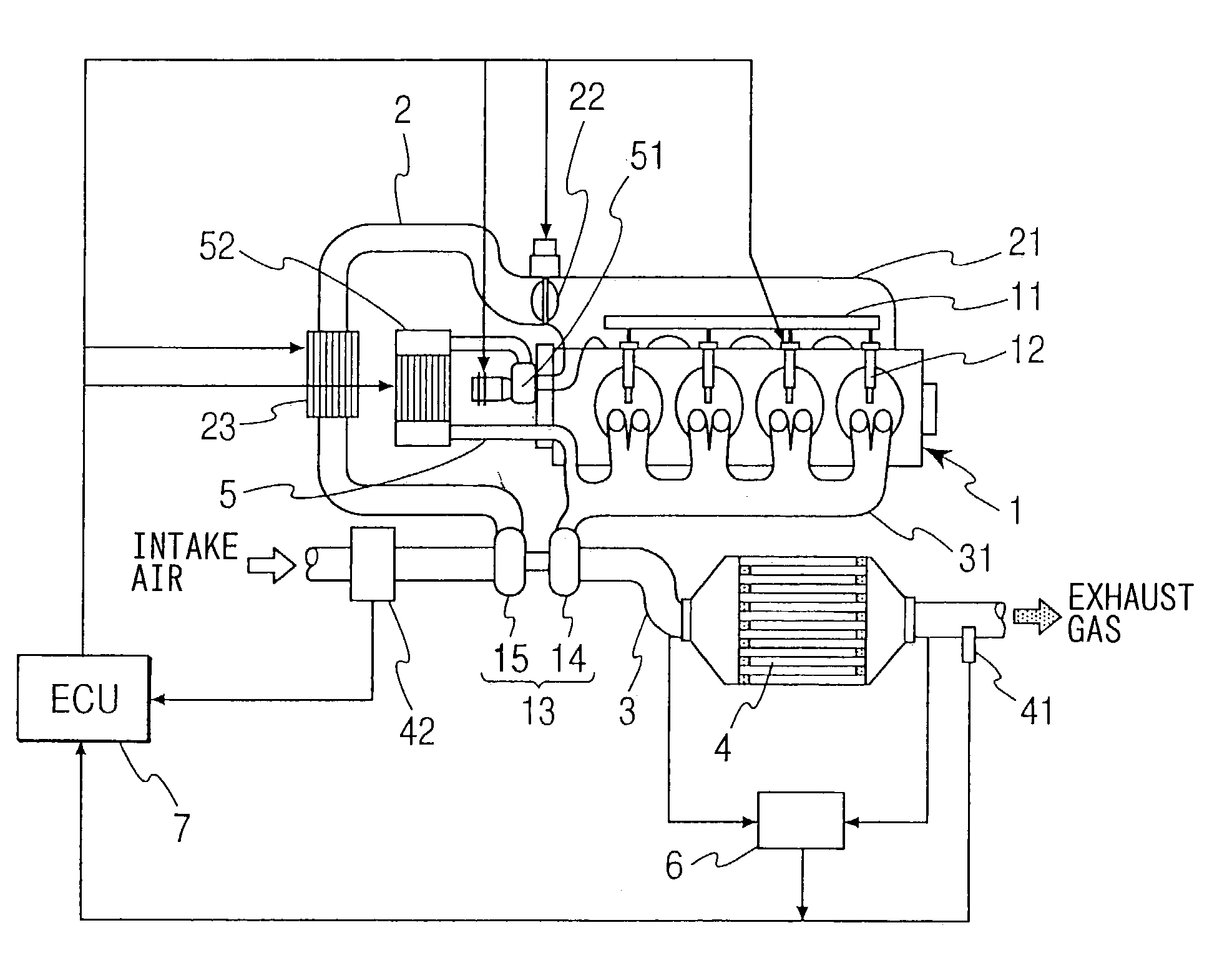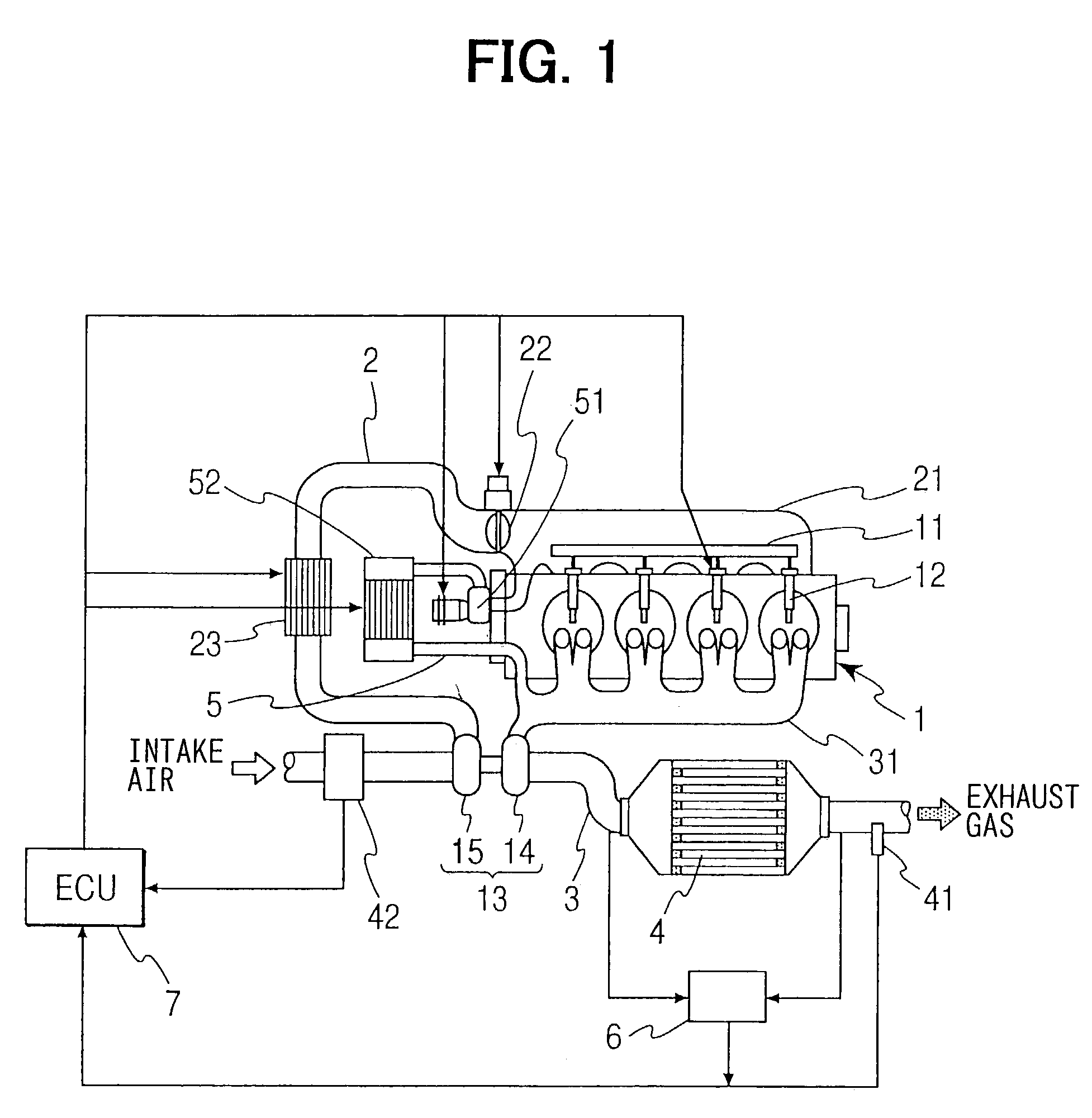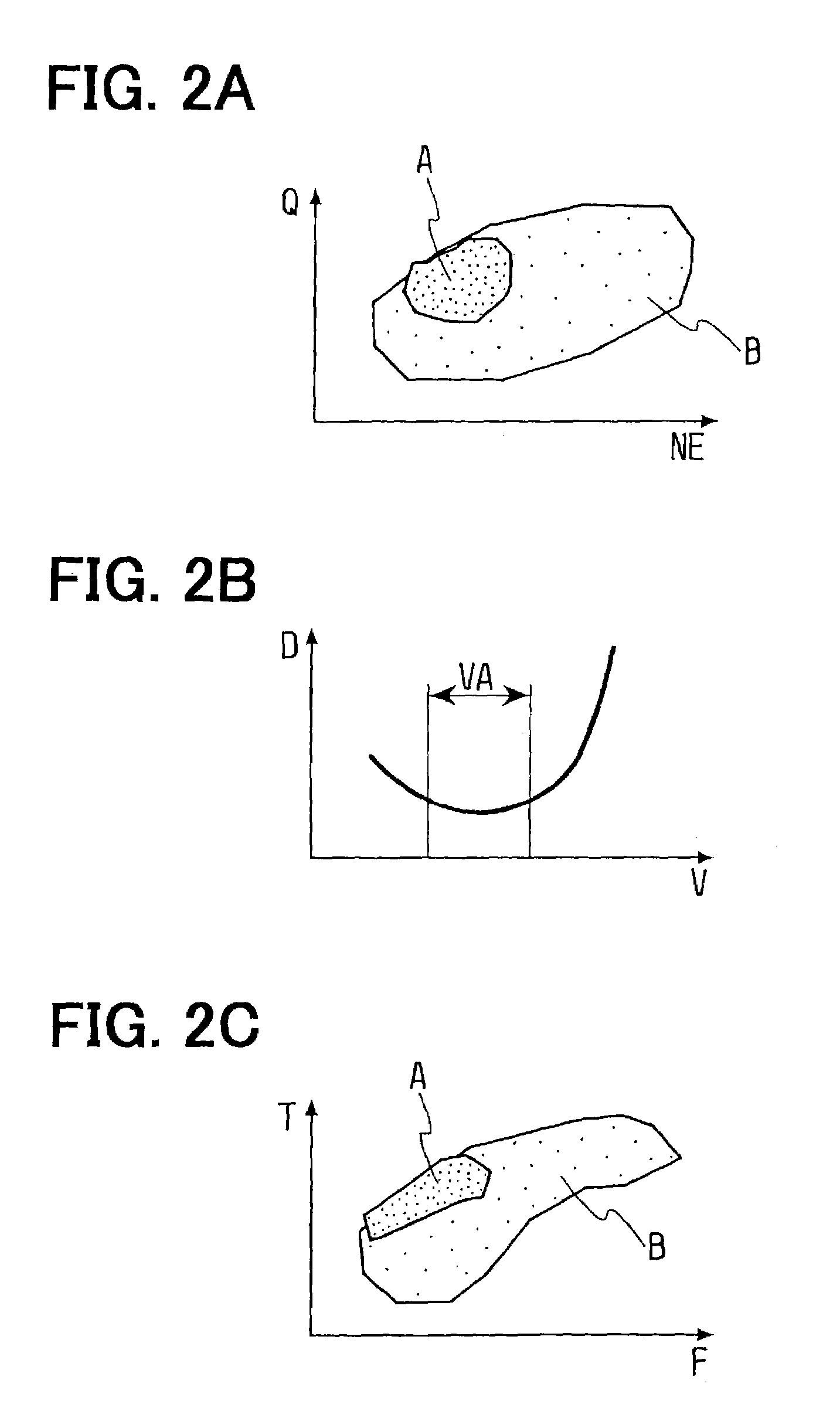Exhaust gas cleaning system having particulate filter
a technology of exhaust gas cleaning and filter, which is applied in the direction of mechanical equipment, machines/engines, electric control, etc., can solve the problems of engine efficiency decline, pressure loss increase, and major reduction of particulate discharge from diesel engines, so as to reduce the dpf and reduce the effect of fuel consumption
- Summary
- Abstract
- Description
- Claims
- Application Information
AI Technical Summary
Benefits of technology
Problems solved by technology
Method used
Image
Examples
first embodiment
[0024]Referring to FIG. 1, a diesel engine 1 having an exhaust gas cleaning system of the first embodiment is illustrated. The diesel engine 1 has a common rail 11, which is common to respective cylinders, and a plurality of fuel injection valves 12, which are connected to the common rail 11 and inject fuel into combustion chambers of the respective cylinders. An intake manifold 21 of the engine 1 is connected with an intake pipe 2. An intake throttle 22 is disposed in the connection between the intake manifold 21 and the intake pipe 2 for regulating a flow rate of intake air.
[0025]An exhaust manifold 31 of the engine 1 is connected with an exhaust pipe 3. A diesel particulate filter (DPF) 4 is disposed in the exhaust pipe 3. The DPF 4 has a publicly known structure. The DPF 4 is made of heat-resistant ceramics such as cordierite and is formed in the shape of a honeycomb. The honeycomb has a matrix of porous filter walls forming a multiplicity of cells extending from one end to anot...
second embodiment
[0041]Next, regeneration control performed by an ECU 7 of a diesel engine 1 according to the second embodiment will be explained based on a flowchart shown in FIG. 5. In the second embodiment, the temperature increase of the DPF 4 is not performed when the operating state of the engine 1 is in a temperature increase dispensable area where the particulate matters can combust spontaneously even if the regenerating means is not operated. First, in Step S201, the ECU 7 calculates the PM collection quantity M based on the exhaust gas flow rate (volume flow rate) and the pressure difference between the upstream portion and the downstream portion of the DPF 4 like the first embodiment. Then, in Step S202, it is determined whether the calculated PM collection quantity M is “equal to or greater than” the first threshold A1 or not. If the result of the determination in Step S202 is “NO”, the processing returns to the start.
[0042]If the result of the determination in Step S202 is “YES”, the pr...
third embodiment
[0046]Next, regeneration control performed by an ECU 7 of a diesel engine 1 according to the third embodiment will be explained based on a flowchart shown in FIG. 6. In the third embodiment, the temperature increase of the DPF 4 is not performed when the operating state of the engine 1 is in a particulate matter combustion impossible area where the temperature increase of the DPF 4 is difficult. First, in Step S301, the ECU 7 calculates the PM collection quantity M based on the exhaust gas flow rate (volume flow rate) and the pressure difference between the upstream portion and the downstream portion of the DPF 4 like the first embodiment. Then, in Step S302, it is determined whether the calculated PM collection quantity M is “equal to or greater than” the first threshold A1 or not. If the result of the determination in Step S302 is “NO”, the processing returns to the start.
[0047]If the result of the determination in Step S302 is “YES”, the processing proceeds to Step S303. In Step ...
PUM
 Login to View More
Login to View More Abstract
Description
Claims
Application Information
 Login to View More
Login to View More - R&D
- Intellectual Property
- Life Sciences
- Materials
- Tech Scout
- Unparalleled Data Quality
- Higher Quality Content
- 60% Fewer Hallucinations
Browse by: Latest US Patents, China's latest patents, Technical Efficacy Thesaurus, Application Domain, Technology Topic, Popular Technical Reports.
© 2025 PatSnap. All rights reserved.Legal|Privacy policy|Modern Slavery Act Transparency Statement|Sitemap|About US| Contact US: help@patsnap.com



